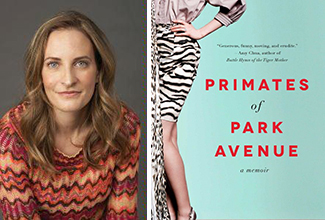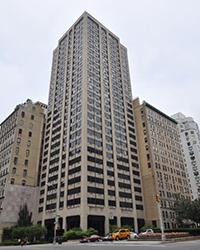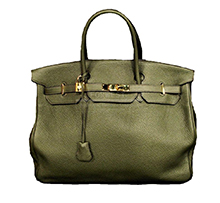Trending
7 things we learned about NYC real estate from “Primates of Park Avenue”

It seems all the world — and by world, we mean New York City — is abuzz about Wednesday Martin’s new book, Real Housewives of the Upper East Side “Primates of Park Avenue.” When Martin, a writer and social researcher, moves from the West Village to the Upper East Side to raise her children, she becomes fascinated with the neighborhood’s unique species of woman. A hybrid of two Janes (Goodall and Birkin), Wednesday tries to find ways to fit in. Being thrust into this peculiar tribe is a writer’s dream, and she chronicles the quirks of the elite with wit and elan.
Martin takes us along for the ride as she learns how to adjust and flourish, changing her parenting, shopping, eating and social activity to be accepted. The book also explores the mad world of New York City real estate as it relates to this particular area of the city —navigating the strange rituals of finding a home, assimilating into one’s building and neighborhood and learning the language of the island’s “vertical dwellers.” As Martin ultimately settles on the purchase of a cond-op at 900 Park Avenue, she emerges an expert on all things New York City real estate.
Here’s what she learns:

900 Park Avenue on the Upper East Side
Renters < Owners (And Owners > Renters): The first rule of real estate in this town is that there is a great social divide, so much so that “many renters in Manhattan keep it a secret … owing to some secret sense of inferiority, a feeling that renting is second-class and contingent.”
The island is organized into quadrants, each with a unique dialect: “The Down” quad is thought to be “primarily a place for pre-productives” who are most interested in night-time social activities, while Uptown is generally reserved for those raising a brood. When Martin and her husband decide they need to relocate uptown post-haste to raise a family, she quickly realizes she needs to find herself someone to teach her the lingo of the Upper East Side. Even within one segment there are distinctions; the area “West of Lex” is where one wants to be.
Real estate agent or bust: “Dwelling shamans” otherwise known as real estate agents, “offer specialized knowledge, counsel and emotional support through this costly, protracted and painstaking initiation process” when one embarks upon selling their home. They are also crucial in assisting one in finding their social identity. Martin knows that it won’t be hard to sell her townhome because “for Manhattanites, having your own standalone dwelling, with no one above or below you, is an unusual, highly prized and highly desirable way to live.” But there are certain telltale signs of where you stand in the process: if a seller’s broker doesn’t appear at a showing, this is an unspoken great “diss.” Likewise, a seller’s broker can be “theatrically protective of the client” and a “self-appointed guardian,” petrified they will somehow be cut out of the deal or the next one when their clients inevitably needs to find a new home after selling.
A buyer’s broker who is a neighborhood specialist is crucial: Martin begins the search for a new Uptown pad sans broker, only to be told time and time again the unit she is most interested in seeing no longer is for sale, being told they are “in contract,” “already sold” or “the website needs to be updated,” but that the broker had “some other things to show.” Martin’s husband explains she needs a separate broker, or “native informant” specifically commissioned to find them a new home, just as every anthropologist needs a nature guide to help them navigate rough terrain.
It’s a woman’s world: Martin chalks this up to agriculture — from the beginning of time women were gatherers and in charge of the hearth. In modern Manhattan, that means securing a place for the family to reside. “The men provide gravitas and a bit of frisson, and then disappear, and then sign off. Or not.”

Hermes Birkin bag
An apartment-hunting uniform is key: “The brokerage business in Manhattan is an ecological niche for and about women,” and “a brokerage’s language is clothing,” Martin states. The seller’s broker dons garb “to channel the respect she wants to garner for her seller and the buyer’s broker dresses to intimidate the seller’s broker.” Martin goes on to explain there is an ultimate dress-off, one in which the client must dress appropriately to convey her seriousness to both agents. The richer she is, the more casual she can dress, by acknowledging she realizes both work for her. The ultimate way to convey dominance in the real estate market — whether a buyer or seller — is through one’s handbag brand, so much so that Martin tells her husband: “If we’re going to find an apartment, I need a new bag.” She is sure to don her uniform when out hunting: demure sheath dress, agnès b flats, ladylike purse and a sleek ponytail.
Co-ops vs condos: Often, one cannot adequately be housed without approval from the “Council of Elders” [the infamous co-op board.] In areas of the land where the wealthiest islanders reside, the vertical villages are most restrictive. The more high-end the building, the harder it is to be approved to buy within it. A distinct difference in Upper East Side co-ops compared to those on the Upper West Side are “summer rules” that ensure renovations are only done during that season so residents can escape to their vacation properties. To avoid all this one can buy a condo, which alerts all other co-op owning contemporaries they probably paid less because they only own shares in the building. Important to note: “Family buildings” do not mean they have playrooms, but rather “they allow 90 percent financing.” Cond-ops, a condo that acts like a co-op, is a rare “hybrid beast” and the best of both worlds.




